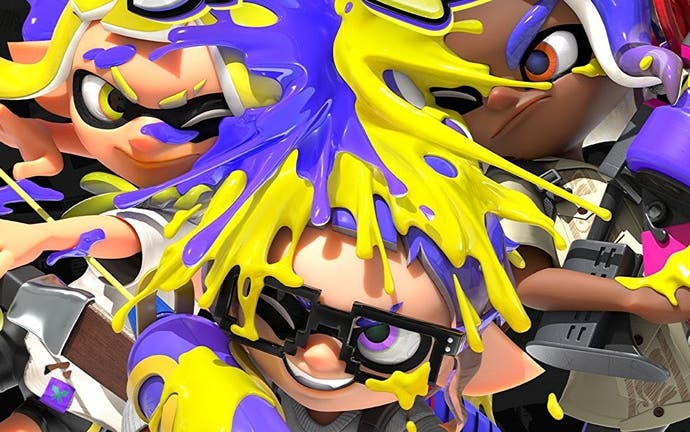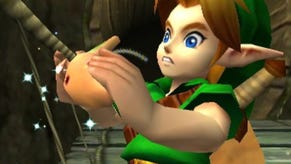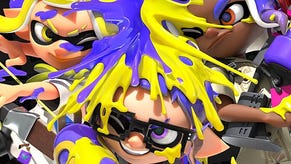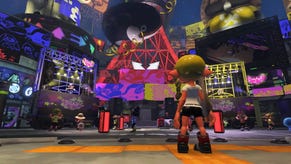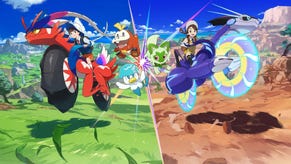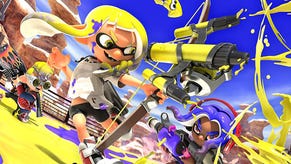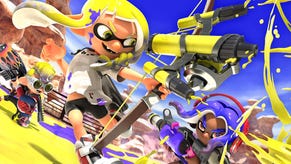Splatoon 3 review - a lot more of the brilliant same
Squid game.
When it comes to Nintendo's most significant releases of the past 10 years, most would - quite rightly - point towards the towering achievement of The Legend of Zelda: The Breath of the Wild, though for me there's a game that came out a few years before that's every bit as important. The Wii U era was a commercial nadir for Nintendo, enlightened by the spark of something new; the lurid splash of colour that was Splatoon, a long-awaited all-new IP from the house that built Mario, and an impeccably enjoyable subversion of the modern-day shooter. For a company that can be too quick to fall back on the familiar, it offered the shock of the genuinely new.
What's more, Splatoon was a huge success and has since become nothing short of a phenomenon, with convenience stores in Tokyo stocked with official snacks and toys while its knockabout brand of messy third-person shooting action has been embraced by millions. Perhaps a little too successful, mind; Splatoon 2 played a part in the Switch's busy launch year, a quickfire sequel to the bold original that could feel a little
There's a sense in the run-up to the release of Splatoon 3 - which comes a clean five years after its predecessor - that it's only offering up more of the same, and that's fair enough. It's spot-on, even; I'd understand if you couldn't quite distinguish a game of Turf War in Splatoon 2 from one in Splatoon 3. They're still both whip-quick, four-on-four, three minute affairs in which you're claiming territory with your ink gun, spraying the map in liberal dashes of colour and eliminating any enemies in your path, diving in and out of the pools in gracious arcs as you switch to you fast-swimming squid form. It's the modern multiplayer shooter as pithy pop art, and it's every bit as fun to play now as it was on the Wii U back in 2015.
Turf Wars is still the bread and butter of Splatoon 3, the casual mode you're locked to until you hit level 10 and get access to ranked mode - which comes in the familiar flavours of Splat Zones, Tower Control, Rainmaker and Clam Blitz - and the mode I still gravitate towards for the brilliance of its balance, composition and execution. And that execution has been finessed in some positive ways, with two new manoeuvres added to your moveset. There's an ink roll, pulled off with a flick of a stick when you're in squid form to give you a brief window of invincibility as you pirouette out of the ink, and a squid surge that lets you speed up surfaces and pop up for a brief moment of vertical superiority - superb additions that are still slight enough you'd be forgiven for not noticing they're there.
And really the biggest additions to Splatoon 3 don't feel like the kind of thing that can be applauded too enthusiastically; it's just that, seven years into its life, this finally has some of the basic features you'd expect of a contemporary online multiplayer game. The lobby system that Splatoon 3 introduces possesses some typical Nintendo flair, while the opportunity has been taken to do away with some old frustrations. You no longer have to sit through the rollcall of current levels every time you log-on, you can
Salmon Run, the horde-like mode that offers up incredibly tense, increasingly challenging online co-op play is now available 24/7, while the Splatfests that made their debut with the public demo late last month have enjoyed a welcome tweak with the introduction of three-way battles (which look like they might need some tweaking themselves given the balancing issues experienced during the public test, something that'll surely happen before the periodic Splatfests return). There's even something akin to seasonal events, with a rewards catalogue you can level your way through being introduced every three months. The action itself might be familiar, but in Splatoon 3 it's in danger of feeling thoroughly modern at points.
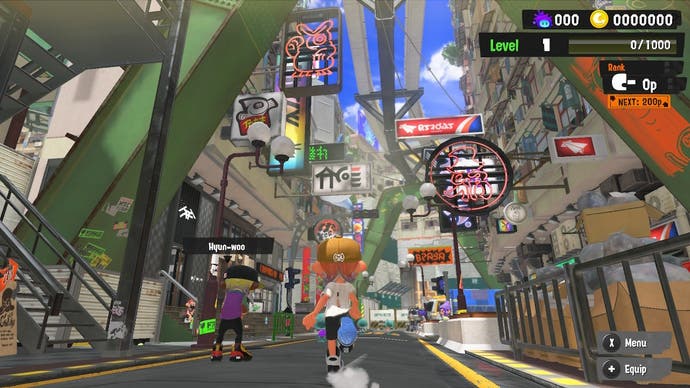
There's an abundance to it all, too, and a generosity that counterbalances that sense of familiarity. Perhaps the finest example of that is one I've spent the least amount of time on, with a fully-fledged 1v1 card battle game playable should you venture down one of the side alleys of new hub world Splatsville. Here you can bring and build your own decks in a witty distillation of Splatoon's Turf War mode. It's revealed some neat depth the handful of times I've played it, and I'm keen to play more.
Or there's the campaign that, having given me some eight or more hours of hard-edged challenge, is worth the price of entry alone. Single-player campaigns aren't new to Splatoon - the first games' was essentially its tutorial, while the second fleshed it out a bit further until the Octo Expansion delivered a fully-fledged single-player experience as a paid download. Splatoon 3's campaign is as fulsome (and as frustratingly tough in parts) as the Octo Expansion, which if you've played it - or heard the rapturous response it got from players - you'll know is a very good thing indeed.

Accessed once again by popping down a drainhole in the main hub - an underwhelming entrance for a mode that turns out to be fairly grandiose - Splatoon 3's campaign gives you a full hub world to explore. Or six of them, even, with the world of Alterna that provides the backdrop for Splatoon 3's 'Return of the Mammalians' split into six islands. You'll gradually unlock these through your adventures, using orbs you earn from playing through levels to blast away obstructions, all so you can progress to the next set of levels or whatever secrets the overworld might be concealing.
It's not unlike some traditional Mario campaigns in that way, and of course the Mario game that Splatoon always evoked the most is Super Mario Sunshine. Those comparisons have been with Splatoon since the start, thanks to the fluid dynamics both games share, though I think it's a comparison that remains useful; there's that same subversive approach Nintendo brings to the video game staple of the shooter, told in Splatoon in big colourful splashes of ink that make it such a joy to just look at. There's that same sense of
I should tell you more, though. Like how Splatoon 3's campaign does, essentially, still act as a tutorial, running you through some of the new weapons and specials you'll be using in multiplayer - but
Or there are new sub weapons, like the Angle Shooter grenade that bounces off walls, used for some ingenious, more puzzly levels. Or new specials like the Zipcaster, a grapple of sorts that flings you towards your target at exhilarating speeds, used in a handful of dizzily vertical platforming levels. Or sometimes it's fun to just go back to basics and colour things in, such as in one level which has you simply using a big bucket of paint to cover a Maoi head in thick ink. So yes, if you're feeling mean you can call it another extended tutorial, but only in the same way a Mario game could be seen as an extended tutorial for the plumber's moveset.

The best workouts, for both players and Splatoon 3's movesets, are provided by the boss encounters that once again provide the highlight as well as the campaign's tensest moments. Sadly there's not much we can show you, thanks to some pretty heavy restrictions in place in the review embargo - though they're understandable, as these boss fights, full of outlandish and ever-creative attacks from some familiar characters, are worth experiencing first-hand yourself.
There are other secrets too, such as scrolls that can be found out in the hub world that delve deep into Splatoon's lore - something that's been gently outlined before and is fully explored here, the series' cheery apocalypse with its grim warning of global warming wrapped up in colourful splashes and smiles and told here in eye-opening detail. There's even an upgrade system, with abilities unlocked as you unearth upgrade points and Salmonoid pieces that help improve your resistance to enemy ink, for example, in a fully-fledged skill-tree - something that's essential to invest in if you want to stand a chance against some of the tougher, later bosses.
It's enough that by the campaign's end you should feel satisfied, if not a little exhausted by the trials the later levels have sent your way. Splatoon 3's campaign doesn't quite challenge in the same way that Octo Expansion did, which is perhaps for the best seeing as it feels more tooled towards newer players than that hardcore add-on, but it does provide a thrilling workout all the same.
There are some valid criticisms to be made. Splatoon 3's levels are, like those that came before, abstract things made of familiar parts, and they never quite have the coherence of a truly great Mario level. They often feel like little labs, or whitebox levels for the designers to toy in before they're fully fleshed out - but then, on the flipside, you get to see some of Nintendo's finest designers at play, dashing out little sketches for you to explore Splatoon 3's newly expanded toolset with.
It's more Splatoon, and I understand if for many that's not quite enough. But also:
